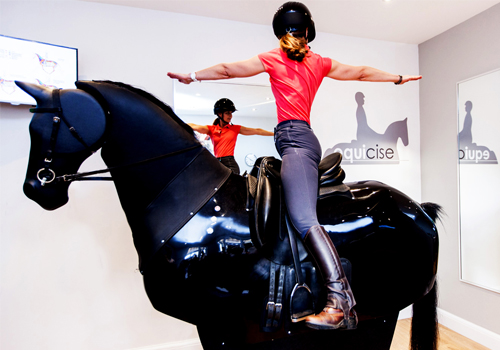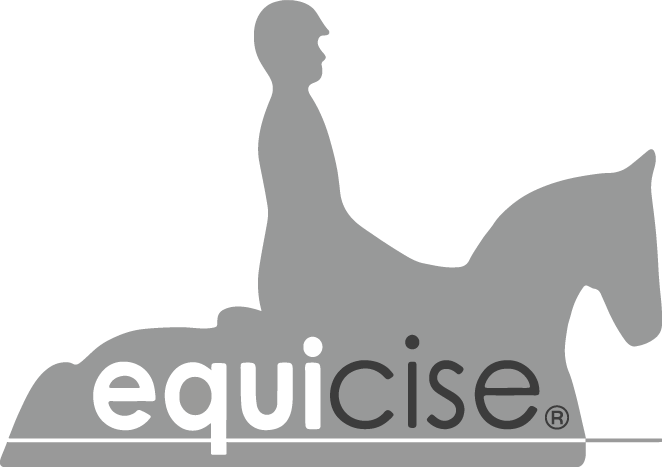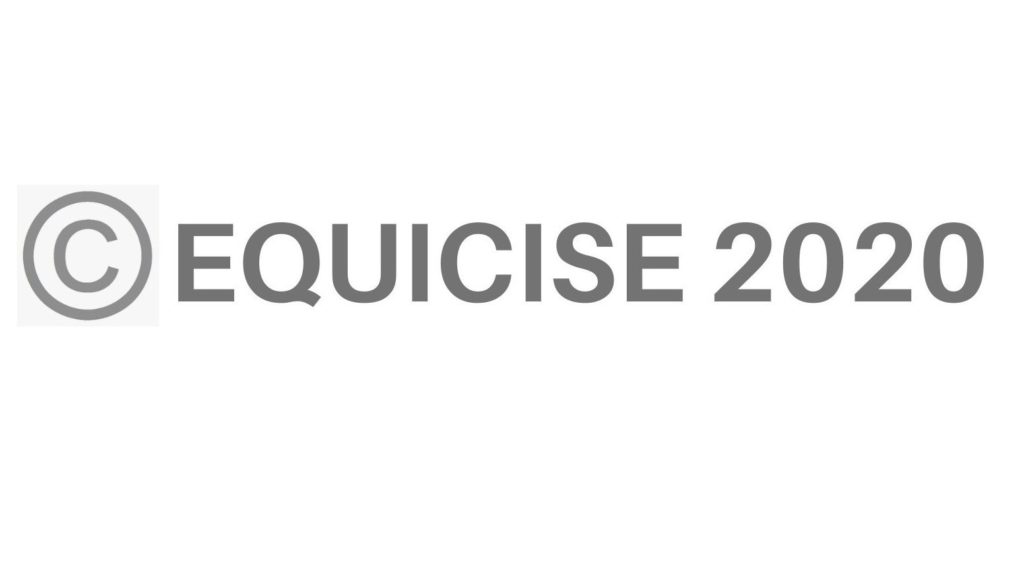11 Jun 10. Improving your balance

We have talked about the importance of balance before, but it is worth considering some exercises that can help you to achieve a secure and balanced seat (which can be practised on a real horse but also, to greater effect, on the EQUICISE, a life sized simulator).
We have discussed how the ability to be both relaxed and balanced requires strong core muscles and flexible hip joints, allowing you to move in harmony with your horse as you follow its movement. And we know that you will prevent your horse from performing to its best ability if you are unbalanced, as horses typically try to compensate for a rider who is sitting crookedly. You can work on strengthening your core muscles in the gym, by taking yoga, Pilates or other classes, by doing exercises at home or by practising on the EQUICISE.
In our last article, we looked at ways to ensure you are both mentally and physically relaxed, a prerequisite for the independent seat you need to achieve if you are to become the best rider you can be. But it will be harder to relax if you are not balanced, so the two go hand in hand – if you feel more secure in the saddle, you will become more confident and less concerned about the risk of falling off, which will allow you to be more relaxed and so minimise any gripping or tension in your body.
So what can you do to help improve your balance? There are a number of useful exercises you can practise on a real horse – particularly in lungeing sessions – or, perhaps more securely, on the EQUICISE. Let’s consider a few of the more common exercises that can help you develop the feel for a balanced seat – ie so that your centre of gravity is aligned with that of your horse – and enable you to recognise it without having to keep looking down to check. They will also help you to develop the necessary muscle memory that will allow you to maintain your balance in any pace, whether riding straight lines or circles, without having to grip with your legs or use the reins to steady yourself.
Riding without stirrups is one way to improve your position as it allows your legs to hang in the right place while also helping to strengthen your core; you should start in walk and gradually build up to trot and canter as your confidence and balance both improve. This can be done in a lesson or on a hack, but is an especially useful exercise if you also ride without holding the reins and this can be done very safely on the EQUICISE in a controlled and safe environment. Holding onto a neck strap can help early on as it allows you to pull yourself deeper into the saddle in sitting trot. Once your balance has improved sufficiently, you can add new challenges: for example, riding with your arms stretched out on either side or with your hands on your hips or you can hold both arms straight up or out to the side as you twist from side to side at the waist. These are all exercises that will help to soften your upper body, relaxing your shoulders and arms and so enabling the elastic contact that a soft, mobile forearm will allow. At EQUICISE, we have a range of personal training equipment that your instructor might suggest you use to increase the effectiveness of these exercises, for example, resistance bands or weights; the mirrors that surround the simulator give you a 360 degree view, allowing you to check that you are maintaining a good position throughout your session.
Another very useful exercise is lifting your thighs away from the saddle and stretching them back and then down, as this allows you to wrap your legs around your horse, finding the centre of the saddle without gripping with your thighs. You can also try holding on to the pommel and lifting your legs away from the horse, moving your toes in and out and drawing your knees up, which will help you to find and stay in the middle of the saddle without gripping with your calves. This exercise will contribute to strengthening your core muscles so that the other parts of your body can remain loose and you will be able to move them independently in any pace – the quest for the all-important independent seat. Some of these exercises may not be so easy to perform on a real horse, but the EQUICISE allows you to practise them in complete safety and at all paces for as long as you want — you could canter for 20 minutes, it won’t complain! Tight hip flexors are often the reason why riders find it hard to sit to the trot and canter but 10 minutes sitting with Pilates balls under your seat bones will open and relax your hip flexors and make sitting in the saddle natural and effortless.
You can also check how balanced you are by changing your normal rising trot to stay up for two beats and sit for one, constantly changing diagonal and thereby ensuring that you are not relying on the movement of your horse’s hind leg to keep your balance.
If you want to improve your balance using a variety of specially designed strategic exercises, book a LESSON on the EQUICISE.
PRACTISE THIS ON THE EQUICISE SIMULATOR
Use the 'Instruction Ride' setting which allows you to monitor your seat position while you are carrying out the balance exercises described above. The seat position reading should remain in the centre of the circle whatever exercise you are performing and it will also show if you are gripping with your legs to stay in position – you can check your alignment by observing your position in the mirrors. The simulator will take all the strain off your horse and the best thing is that it won't mind trotting or cantering for 30 minutes without a break while you train. Do your horse a favour and book a session on the simulator today!




